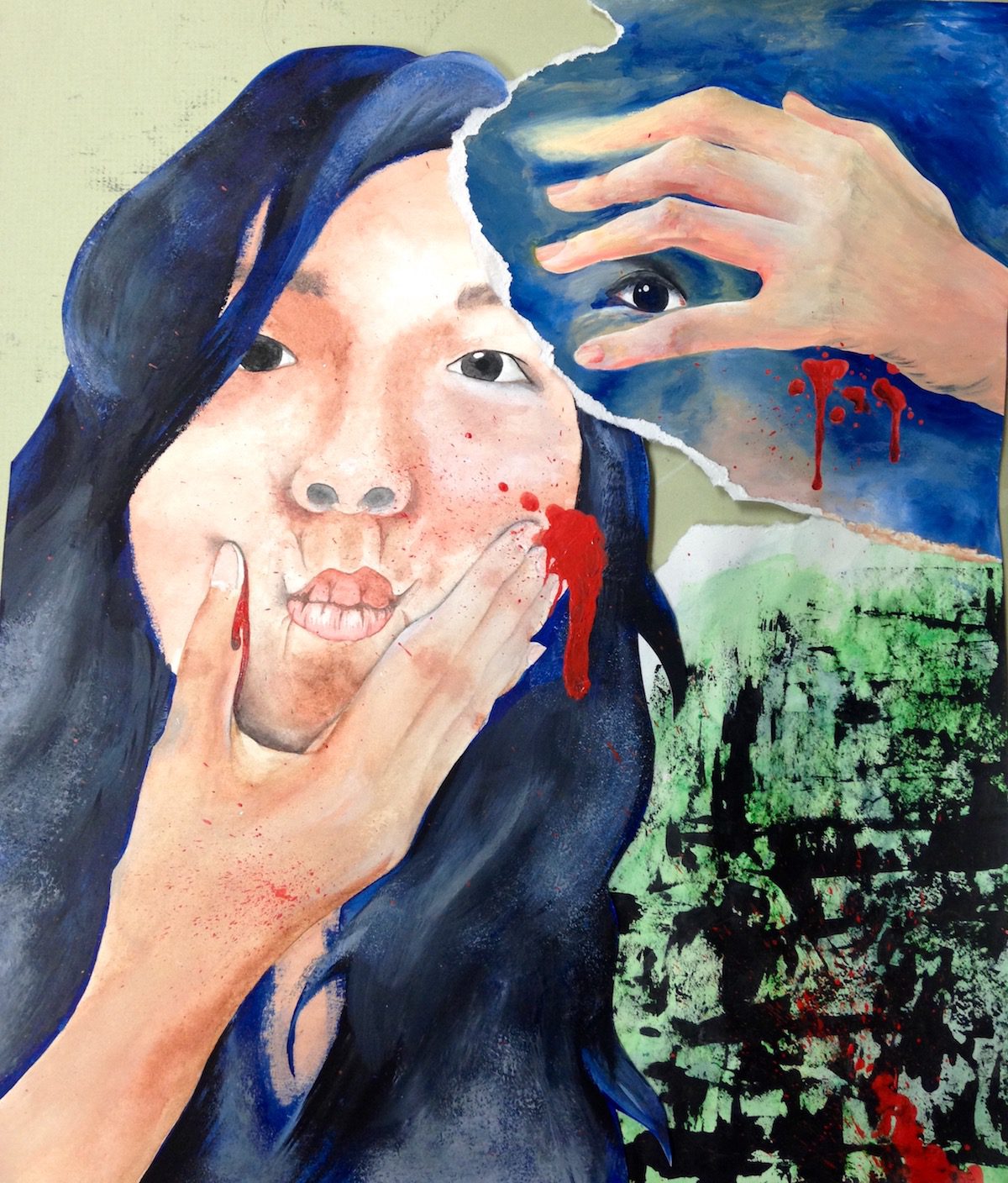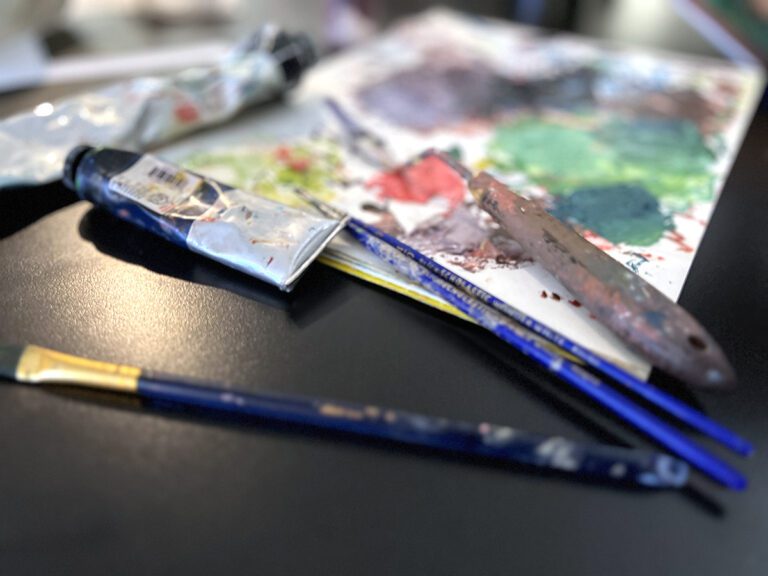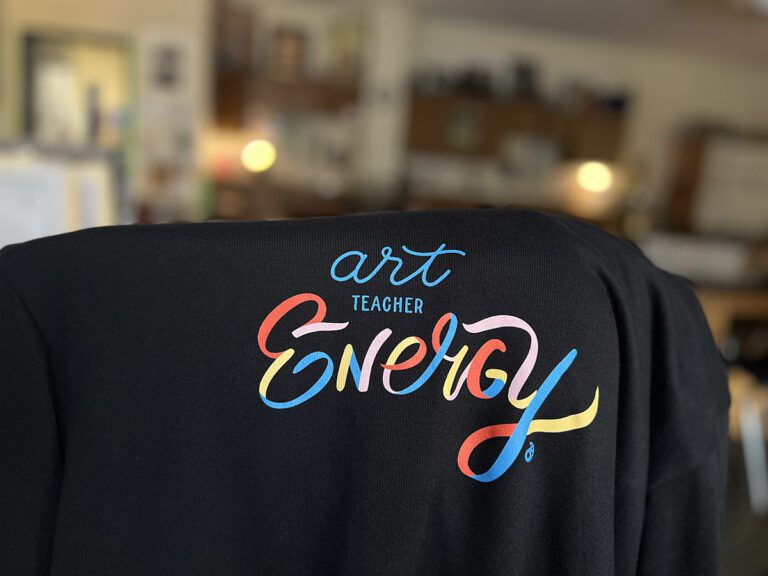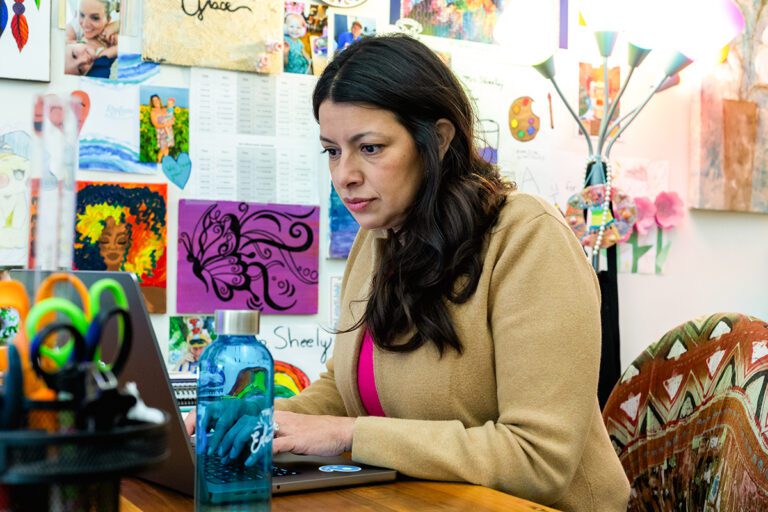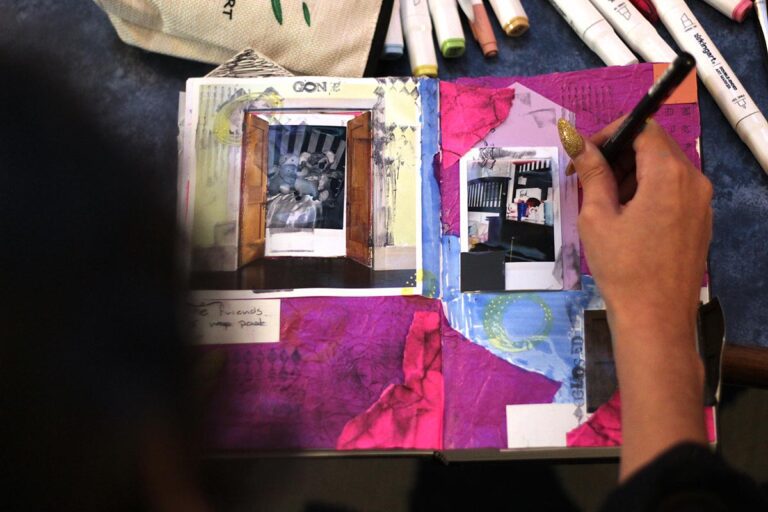As art educators, we know there isn’t an absolute “right” way to teach art to our students.
There are many methodologies, techniques, standards, and creative ways to impart knowledge and teach our students to be the best artists they can be. There is one belief I feel strongly about, however, and it has become quite the conversation piece with other art educators.
The question? How do you feel about making marks on your students’ work?
Personally, I am adamantly against it. There are several reasons I feel this way, but primarily, it’s because I look at it as cheating.
Imagine a music teacher working with a student to prepare a solo. The student is about to perform, but at the last minute, the teacher stops him. The teacher tells the student he isn’t quite ready, so he should just stand there and mouth the words while the teacher sings in the background.
While this scenario sounds quite far-fetched, isn’t that what art teachers are doing when they draw or paint on their students’ work? Suddenly, the art doesn’t solely belong to the student anymore. Once the teacher adds even a line to the work, it has lost its authenticity.
The dispute especially comes into play when the discussion of modeling comes up. Of course, all good art teachers must model techniques and examples for their students. But, why does this scenario make it ok to mark on a student’s work?
There are many other ways to model strong artmaking techniques. Here are 3.
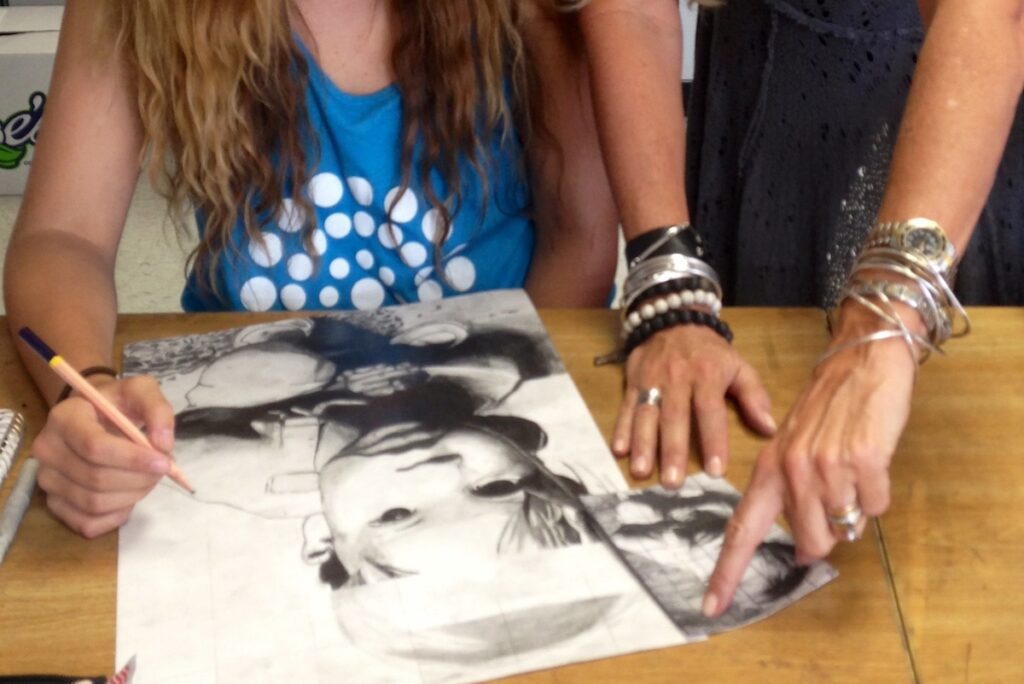
1. Use a journal or sketchbook.
As you move from student to student, have a journal or sketchbook to show specific methodologies as students need them.
2. Try tracing paper.
When showing how students may tweak a specific line or part of a drawing in a composition, try using tracing paper. Lay the paper down, do a little sketching, then take the tracing paper away. Watch as they creatively use this new information to make their own lines.
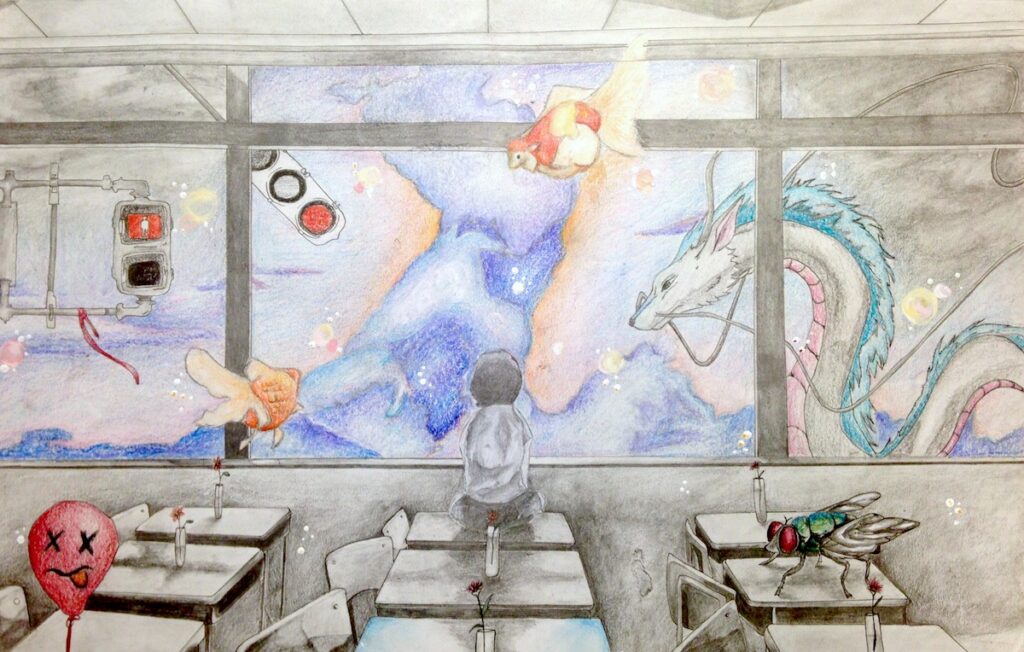
3. Set up media centers for practice.
Allowing students to experiment with and practice different techniques before applying them to a finished work helps build student confidence. You might set up an area for students to practice graphite techniques, oil pastel blending, watercolor painting, or other media your students want more practice with. How exciting would it be for students to take their new skills and use them with confidence in an art project?
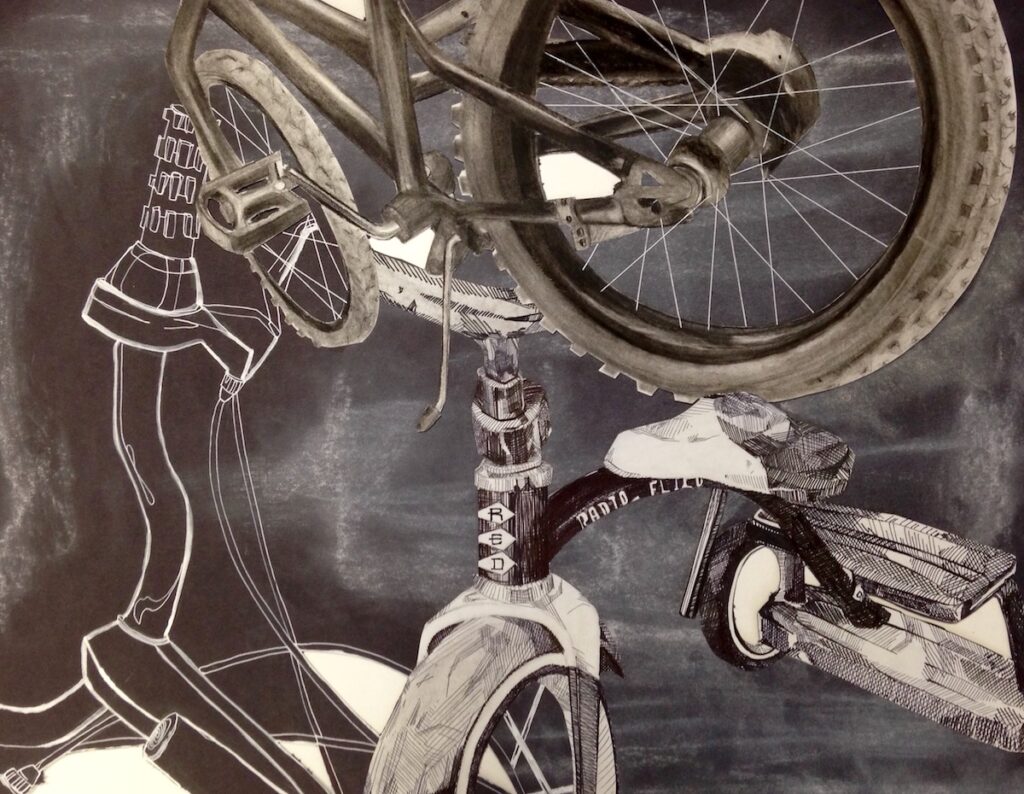
In short, I believe when we draw on a student’s work, we are taking their confidence away.
The act of “fixing” another’s art communicates that their marks aren’t good enough. And, if we continually draw on student work, we are telling them we don’t believe they will ever be good enough.
Over the years it starts to become obvious which teachers are manipulating their students’ art because the work starts to look very similar. Do we really want our current students’ work to look like our past students’ work?
Personally, I want my students’ art to look like their own art! I want their “artistic voices” to be heard! Art is about self-expression, and it’s our job to teach our kids to make the best art they can without our additional marks. Let their art voices be heard.
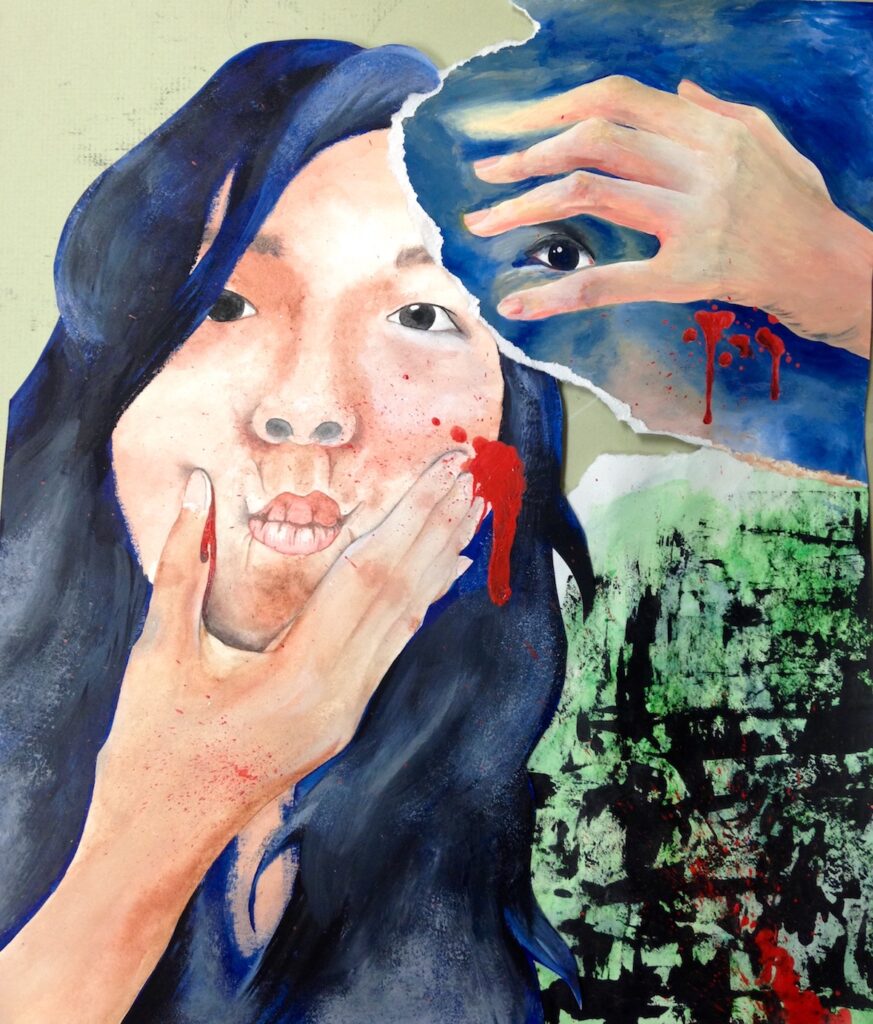
I’d like to end with a story. Several years ago, I had a wonderful student teacher working with me. On Day 1, I was going over our department’s philosophies with her. When I mentioned, under no circumstances, was she to mark on a child’s artwork, she breathed a sigh of relief.
She told me she had had a previous placement where the exact opposite happened. Her cooperating teacher had told her, “Don’t ever hold a student back for extra work time. We can fix the art when they leave!”
Just writing about it makes my heart sad. I realize there are different viewpoints out there. Some of my colleagues have made arguments for why they mark student art. But, is that what art education has become? Do we really think it’s ok to “fix students’ work” without their permission? I’d love to hear your thoughts!
Have you ever marked on your students’ art? If so, what were the circumstances?
Do you think it’s OK to submit art that has been touched by an instructor to scholarships or competitions?
Magazine articles and podcasts are opinions of professional education contributors and do not necessarily represent the position of the Art of Education University (AOEU) or its academic offerings. Contributors use terms in the way they are most often talked about in the scope of their educational experiences.
